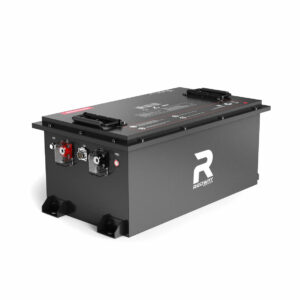How Does the Peak 200A Lithium Battery Revolutionize Energy Storage?
The Peak 200A lithium battery is a high-performance energy storage solution designed for applications requiring robust power output and longevity. With a 200Ah capacity and 12.8V voltage, it leverages LiFePO4 chemistry for enhanced safety, thermal stability, and 3,000+ charge cycles. Ideal for solar systems, marine use, and backup power, it integrates a Battery Management System (BMS) to prevent overcharging, overheating, and short circuits.
What Are the Core Specifications of the Peak 200A Lithium Battery?
The battery operates at 12.8V with a 200Ah capacity, delivering 2,560Wh of energy. Its LiFePO4 cells ensure stable performance across -20°C to 60°C temperatures. With a continuous discharge current of 100A (150A peak), it supports high-power devices like inverters. The built-in BMS safeguards against voltage spikes, deep discharges, and cell imbalances, extending lifespan to 8–10 years.
For advanced users, the modular design allows seamless integration into larger systems. Four units can be connected in parallel to achieve 800Ah capacity, supporting energy-intensive setups like off-grid homes. The low self-discharge rate (3% per month) outperforms lead-acid batteries (5–15% monthly), making it ideal for seasonal applications. Terminal options include M8 bolts for marine environments and compression lugs for industrial installations.

How Does LiFePO4 Chemistry Enhance Safety and Efficiency?
LiFePO4 (lithium iron phosphate) batteries resist thermal runaway, a critical safety advantage over traditional lithium-ion. They maintain 80% capacity after 3,000 cycles, compared to 500–1,000 cycles for lead-acid batteries. The chemistry minimizes energy loss during charge/discharge, achieving 95% efficiency versus 70–85% in AGM batteries. This makes them ideal for frequent cycling in renewable energy systems.
Where Is the Peak 200A Lithium Battery Most Effective?
Key applications include off-grid solar storage, marine/RV power systems, and industrial UPS backups. Its lightweight design (24–28 kg vs. 60+ kg for lead-acid equivalents) reduces transportation costs. For solar setups, it pairs with 200–400W panels, storing 2–4 kWh daily. In marine contexts, it powers trolling motors and navigation systems without voltage drop during sustained use.
In industrial settings, the battery’s rapid charge acceptance (up to 1C rate) minimizes downtime during grid outages. Telecom towers benefit from its -20°C discharge capability, eliminating the need for external heating in cold climates. A recent case study showed a 35% reduction in generator runtime for a remote Alaskan weather station after switching to Peak 200A batteries.
What Maintenance Practices Prolong Battery Lifespan?
Unlike lead-acid batteries, LiFePO4 requires no watering or equalization charges. Store at 50% charge if unused for extended periods. Avoid temperatures below -20°C during charging. The BMS auto-balances cells, but annual voltage checks (12.8V nominal, 14.6V max charge) are recommended. Use compatible lithium-specific chargers to prevent under/overcharging.
| Maintenance Task | Peak 200A | Lead-Acid |
|---|---|---|
| Water Refilling | Not Required | Monthly |
| Equalization Cycles | 0 | 12-24/year |
| Storage Charge Level | 30-50% | 100% |
How Does It Compare to Lead-Acid and AGM Alternatives?
The Peak 200A provides 3x the cycle life of AGM batteries at half the weight. While upfront costs are higher (¥6,880 vs. ¥1,160 for basic lead-acid), total ownership costs are 40% lower due to longevity. It discharges to 100% depth without damage, unlike lead-acid’s 50% limit, effectively doubling usable capacity.
Expert Views
“The Peak 200A’s BMS design addresses historic lithium battery concerns,” says Dr. Wei Zhang, Redway’s Chief Engineer. “We’ve optimized cell balancing to within ±20mV, ensuring uniform aging. Its modular design allows parallel connections up to 4 units for 800Ah systems. For cold climates, our optional self-heating cells maintain -30°C operability—a game-changer for Arctic solar projects.”
Conclusion
The Peak 200A lithium battery redefines energy storage with unmatched safety, efficiency, and adaptability. Whether for renewable energy integration or mobile power solutions, its technical superiority and low maintenance make it the optimal choice for modern energy demands.
FAQ
- Q: Can I replace my lead-acid battery with the Peak 200A directly?
- A: Yes, but ensure your charging system supports LiFePO4 voltage profiles (14.2–14.6V absorption).
- Q: What’s the recharge time for a fully depleted battery?
- A: Using a 40A charger, full recharge takes 5 hours (200Ah ÷ 40A = 5h). Solar recharging varies by panel output.
- Q: Is it safe for indoor installation?
- A: Absolutely. Unlike vented lead-acid, LiFePO4 emits no hydrogen gas and requires no ventilation.
